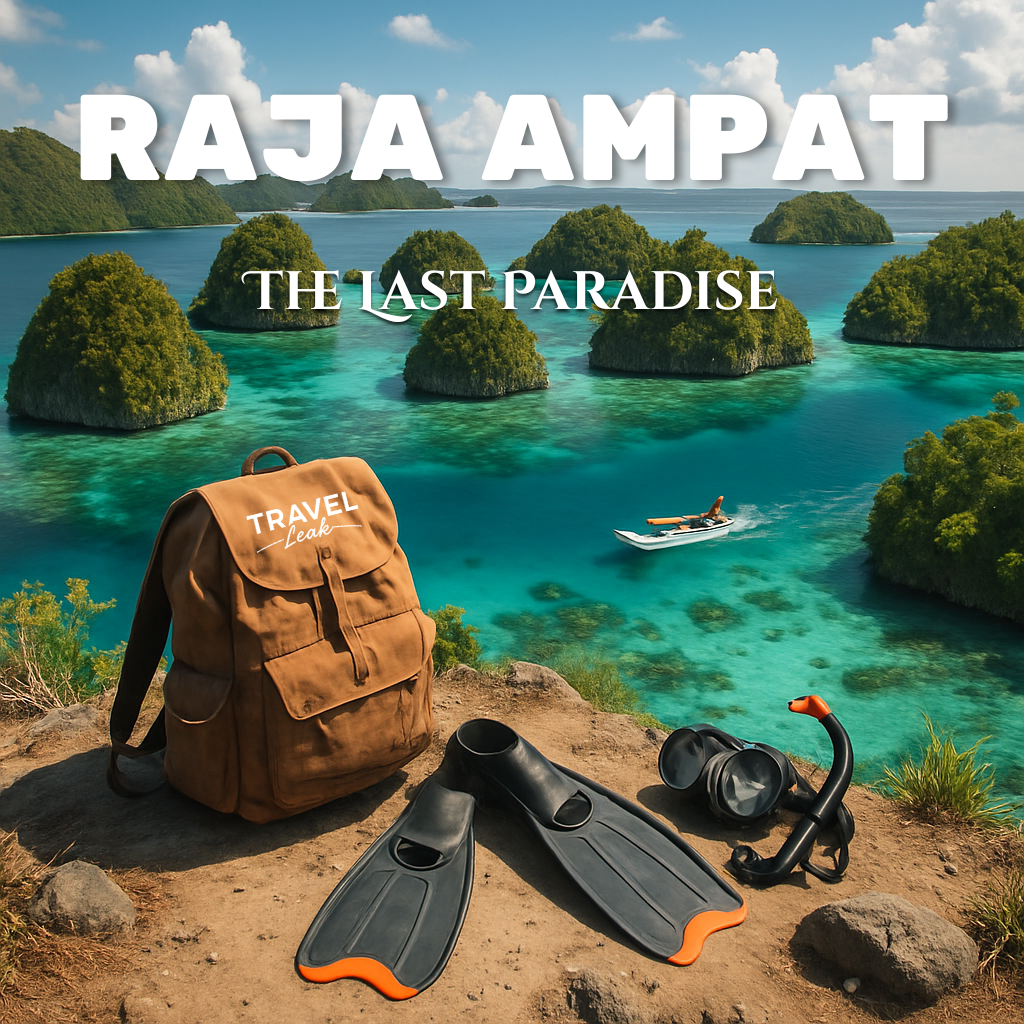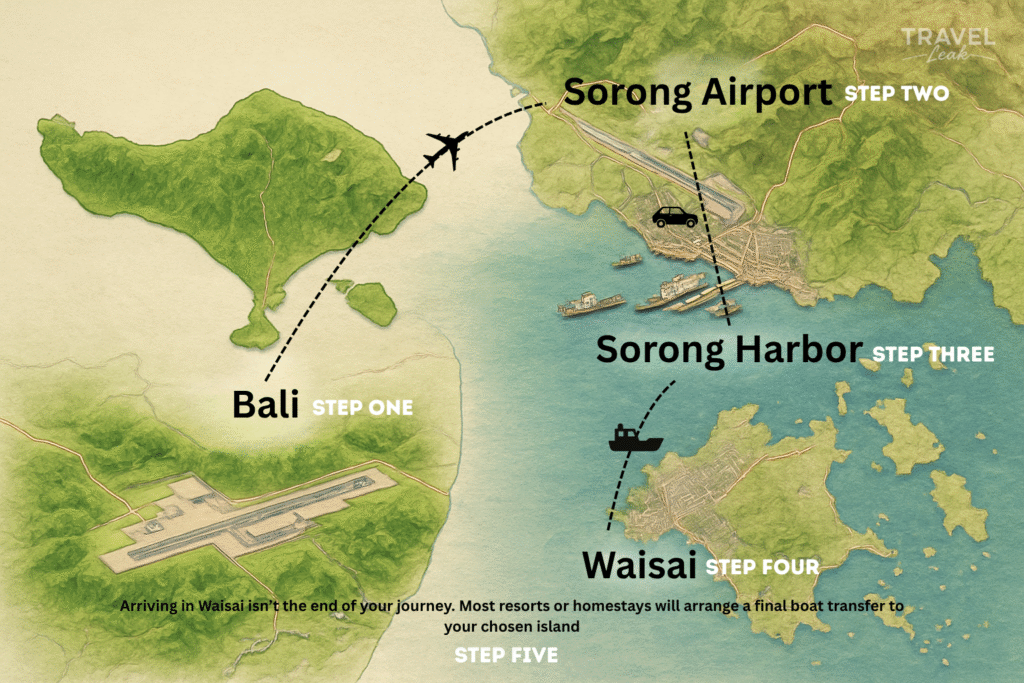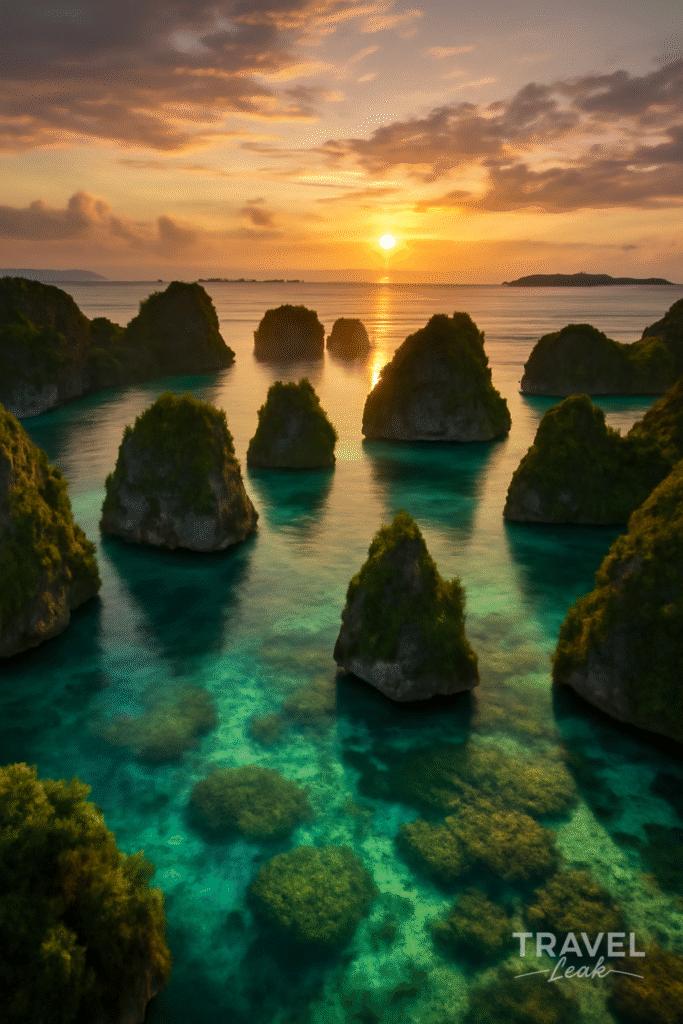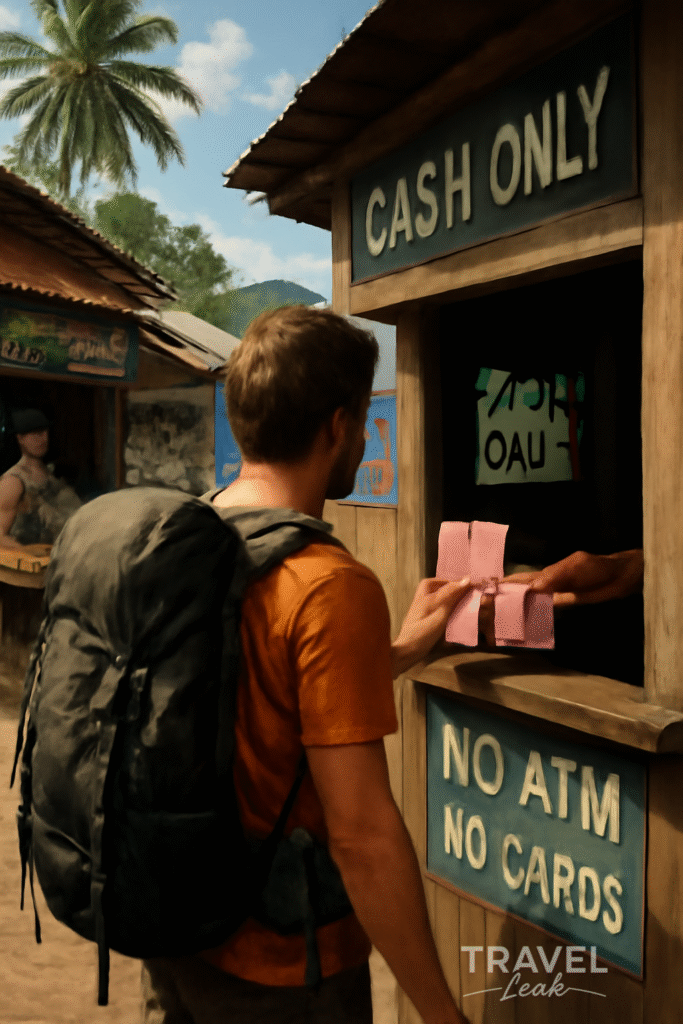Beyond the Reef: Solving the Raja Ampat Travel Puzzle (and Why You’ll Love the Challenge)
Quick confession: Raja Ampat wasn’t on my bucket list until an epic travel mishap left me scanning a map for somewhere, anywhere, that didn’t have a paved road in sight. That’s how I stumbled into planning what felt like a marathon treasure hunt through Indonesia’s wild east—the kind of journey where each leg comes with its own riddle, and unexpected magic lurks just beyond the next ferry schedule. If you think you’re ready to trade convenience for soul-stretching beauty and maybe a little bit of chaos, this is your roadmap to the last paradise.
Section 1: The Raja Ampat Puzzle—Every Step Earns You a View
If you’re dreaming of Raja Ampat, know this: getting there is an adventure in itself. This isn’t a place you stumble upon by accident. The journey is a series of steps—each one a little challenge, each one bringing you closer to a view you’ll never forget.
Step One: The Long Haul to Indonesia
Your journey begins with a flight to either Jakarta or Bali. These are Indonesia’s main international gateways, and for most travelers, there’s no way around them. The airports are busy, sprawling, and full of energy. It’s here that your Raja Ampat story truly begins. You might feel a mix of excitement and nerves—after all, you’re heading to one of the world’s last untouched paradises.
Step Two: The Hop to Sorong
From Jakarta or Bali, you’ll need to catch a domestic flight to Sorong. This leg takes about three to four hours. As you settle into your seat, you might wonder if the effort is worth it. But research shows Raja Ampat’s remoteness is exactly what keeps its reefs so pristine and its islands uncrowded. The anticipation builds as you fly over endless stretches of ocean and jungle, knowing you’re getting closer to something extraordinary.
Step Three: Taxi to the Harbor
Once you land in Sorong, your next move is to grab a taxi to the harbor. This is a straightforward ride, but it’s essential to keep your schedule in mind. The ferry to Waisai, the main town in Raja Ampat, runs on a tight timetable—usually departing at 9 a.m. and 2 p.m. Double-check the times before you go, as delays or changes are not uncommon. Missing the ferry means an unexpected overnight in Sorong, so plan accordingly.
Step Four: The Ferry to Waisai
The ferry ride itself is part of the adventure. You’ll join a mix of locals, travelers, and supplies all heading to the islands. The crossing takes about two hours, and as you watch the coastline slip away, you’ll start to feel the remoteness of Raja Ampat. The sea breeze, the chatter of fellow passengers, and the sight of distant islands all add to the sense of anticipation.
Step Five: The Final Boat Ride—Your First Taste of Island Life
Arriving in Waisai isn’t the end of your journey. Most resorts or homestays will arrange a final boat transfer to your chosen island. Sometimes it’s a sleek speedboat; other times, it’s a wooden longboat piloted by a local with a weathered smile. Each transfer is a mini-adventure. The wind whips through your hair, the water sparkles, and you realize you’re almost there. Every wave, every splash, brings you closer to that first jaw-dropping view.
“Each boat transfer unfolds as a mini-adventure: the wind tousling your hair, the allure of paradise visible on the horizon, and the realization that each step, or wave, draws you nearer to something truly extraordinary.”
Why the Challenge Is Worth It
There’s a reason Raja Ampat feels so untouched. The complicated journey acts as a natural filter, preserving the region’s incredible biodiversity. Studies indicate that Raja Ampat is home to over 1,500 fish species and more than 500 types of coral—making it one of the richest marine environments on Earth. The effort to get here helps keep the reefs healthy and the islands uncrowded, ensuring that your experience is as magical as you imagined.
Every step of the journey—flights, ferries, taxis, and boats—adds to the sense of accomplishment. You’ll find that the more effort you put in, the more rewarding the arrival feels. And when you finally set foot on your island, surrounded by turquoise waters and lush jungle, you’ll know that every twist and turn was worth it.
Raja Ampat isn’t just a destination; it’s a puzzle. But for those willing to solve it, the reward is a view—and an experience—that stays with you long after you leave.
All journeys have secret destinations of which the traveler is unaware.
Martin Buber
Section 2: Beyond Diving—Wildlife, Accommodation, and That Piaynemo View (with Blistered Feet)
Raja Ampat is often called a diver’s paradise, but if you think it’s only about what lies beneath the waves, you’re missing half the story. This remote archipelago is a living, breathing natural wonder, with adventures and experiences for every kind of traveler. Whether you’re a birder, a jungle explorer, or just someone who wants to wake up in an overwater bungalow, Raja Ampat lets you choose your own version of paradise.
Not Just for Divers: Birdwatching, Jungle Treks, and Island Life
While the reefs here are legendary, you don’t need a scuba certification to fall in love with Raja Ampat. The islands are home to lush jungles, rare birds, and a sense of wildness you’ll feel the moment you step off the boat. Birdwatchers flock here hoping to spot the iconic red bird-of-paradise or the Wilson’s bird-of-paradise, both of which are found only in this region. Early mornings echo with the calls of hornbills and cockatoos, and if you’re lucky, you might catch a glimpse of a cuscus or monitor lizard as you trek through the forest trails.
Jungle trekking is another way to get close to Raja Ampat’s untamed heart. Trails wind through thick rainforest, past hidden waterfalls and ancient trees draped in orchids. Some paths lead to tiny villages, where you can experience local Papuan culture firsthand. Others end at secret beaches, where you’ll find yourself alone with the sound of waves and the scent of salt in the air.
Where to Stay: Waigeo, Misool, Batanta—Find Your Perfect Base
Your experience in Raja Ampat will be shaped by where you choose to stay. Each main island offers something a little different:
- Waigeo: This is the most accessible island, making it a favorite for first-timers. It’s close to Waisai (the main port) and offers easy access to famous dive sites like Cape Kri and Manta Sandy. You’ll find a mix of eco-resorts, homestays, and even some mid-range hotels. Waigeo is also a hotspot for birdwatching and jungle walks.
- Misool: If you’re craving luxury and seclusion, Misool is your dream come true. The island is home to some of the region’s most exclusive eco-resorts, with overwater bungalows that seem to float above the coral gardens. It’s remote, quiet, and perfect for those who want to disconnect and immerse themselves in nature.
- Batanta: For travelers seeking a blend of adventure and tranquility, Batanta offers eco-friendly resorts and homestays surrounded by rainforest. It’s known for its waterfalls, birdlife, and opportunities for kayaking or exploring mangroves. Batanta is also a great base for “muck diving”—searching for rare critters in the sand and silt.
Homestays are a unique way to experience Raja Ampat’s culture and hospitality. Run by local families, these simple accommodations put you right at the water’s edge. You’ll fall asleep to the sound of the sea and wake up to sunrise over the islands—no luxury required.
The Piaynemo Viewpoint: 400 Steps to Paradise
No visit to Raja Ampat is complete without making the pilgrimage to Piaynemo. But be warned: the climb is real. You’ll face 350 to 400 wooden steps, and in the tropical heat, every step counts. Your calves will burn, your shirt will cling, and you’ll wonder if the view is really worth it. And then you reach the top.
“The legendary panorama is worth every twinge. The view is unforgettable, lingering in your memory long after you leave—truly, it’s the stuff of screensavers and daydreams.”
From the summit, you’ll gaze out over a surreal maze of emerald karst islands scattered across turquoise water. It’s one of those rare moments when the world feels impossibly beautiful—and you realize why so many travelers call Raja Ampat the last paradise.
Wildlife Surprises: Above and Below
Raja Ampat’s biodiversity isn’t limited to the ocean. Research shows the region is home to over 1,400 fish species and 537 types of coral, but the surprises extend above the surface. Watch for dolphins chasing your boat, sea eagles soaring overhead, and butterflies flitting through the jungle. Every day brings a new encounter, a new story, a new reason to fall in love with this wild corner of Indonesia.
Section 3: Survival Hacks & Sanity Savers—Budget, Packing, and Smarter Adventure Planning
If you’ve made it this far in your Raja Ampat research, you already know: this isn’t a destination for the unprepared. The journey is part of the magic, but it’s also a test of your planning skills, patience, and flexibility. To help you sidestep the most common pitfalls, here’s what you need to know before you set sail for the “Last Paradise.”
First, let’s talk money. Cash is king in Raja Ampat. ATMs are almost nonexistent once you leave Sorong, and credit cards are rarely accepted, even at many resorts and dive shops. Before you board that ferry to Waisai, make sure you’ve withdrawn enough Indonesian rupiah to cover your entire stay—plus a little extra for unexpected expenses. Running out of cash here isn’t just inconvenient; it can mean missing out on meals, boat rides, or even your return ticket. It’s a simple step, but it’s absolutely essential.
Connectivity is another challenge. Internet and mobile signals are patchy at best, and some islands have no coverage at all. Buy your SIM card on the mainland—Jakarta or Sorong are your best bets—and let the vendor know you’re heading to Raja Ampat so they can recommend the best provider for the region. Even then, don’t expect to be streaming videos or uploading photos in real time. If you need to check ferry schedules or contact your accommodation, do it well in advance. Consider this digital detox part of the adventure.
When it comes to packing, think essentials—not excess. The tropical sun is intense, so bring reef-safe sunscreen to protect both your skin and the fragile coral. Mosquito repellent is a must, especially if you’re staying in homestays or venturing into the jungle. A headlamp or flashlight will save you during the frequent power outages, and a waterproof bag is invaluable for keeping electronics safe on boat rides. Don’t forget a reusable water bottle—single-use plastics are discouraged, and staying hydrated is crucial in the heat. And if you’re a photographer, pack a spare camera battery; charging options can be limited, and you won’t want to miss a single shot.
Diving is the main draw for many, but not all dive operators are created equal. Research shows that diving in Raja Ampat is considered safe when you go with experienced guides who know the local conditions. Strong currents are common, especially around the full and new moon, so it’s wise to choose well-reviewed dive centers with a proven safety record. While budget options exist, be sure to check their equipment and standards closely. Sometimes, paying a bit more means peace of mind—and a better overall experience. As the Raja Ampat Diving Code of Practice emphasizes, “Protecting marine life and ensuring safe diving practices go hand in hand.”
If you’re looking to save money, there are smart ways to do it. Splitting boat rides with other travelers is a classic hack—ask around at your homestay or resort, and you’ll likely find others heading in the same direction. Many dive packages include transfers, meals, and equipment, which can offer better value (and less hassle) than arranging everything separately. Take the time to compare what’s included before you book; sometimes, the upfront cost is higher, but the overall savings and convenience are worth it.
Ultimately, Raja Ampat rewards those who come prepared. The remoteness that makes this place so special also demands a bit more from its visitors. But with thoughtful planning—packing the right gear, budgeting carefully, and choosing your operators wisely—you’ll be free to soak up every moment. Whether you’re floating above a coral garden teeming with life or watching the sunset paint the sky in impossible colors, you’ll realize the journey was worth every step. Embrace the challenge, and Raja Ampat will give you memories (and stories) that last a lifetime.
TL;DR: Raja Ampat may be hard to reach, but every hurdle makes the payoff sweeter. Plan ahead, embrace the adventure, and you’ll soon be living your own version of paradise—whether underwater or above. Bring extra cash, a healthy dose of humor, and leave room in your backpack for stories you’ll be telling for years.





